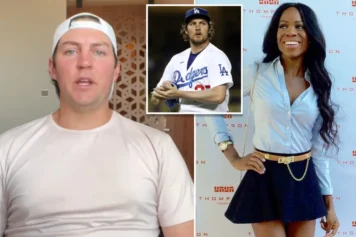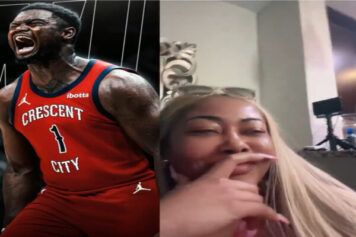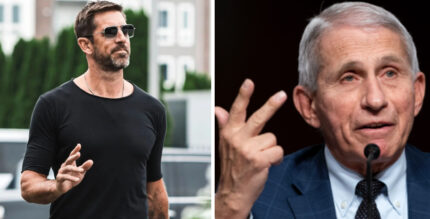For those whose lives are part of the urban car culture, the love of cars and bikes extends beyond the love of metal and rubber; it becomes a manifestation of individual expression.
You “take what existed and turn it inside out,” said Mad Max: Fury Road production designer Colin Gibson in our interview with him last week.
That’s what makes your vehicle so special. That makes it stand out. You can’t just slap a design on it and call it custom. It has to be representative of your personality or your lifestyle.
Said Gibson, “A lot of people think you can just weld a piece of barb wire to a Camaro and you’ve nailed the future.”
By the looks and functionality of the vehicles he designed in the film, you can tell that he understands and respects the custom car lifestyle.
The urban car culture is diverse, not just in the demographic make-up but also in the types of groups it’s comprised of. You have the high-end luxury car crowd, those who love brands such as Ferrari, Lamborghini, Aston Martin and Maserati: the top of the line vehicles that come finely tuned, requiring minimum adjustments as they are high performance, beautifully crafted, attention magnets.
You also have the high end SUV crowd, centered around the likes of the Escalades and Cayanes. Then there’s the big truck crowd who prefer Avalanches and Yukons. And theres the muscle car aficionados, the import tuner market, the low riders and the motorcycle crowd.
Yet no matter which group you fall under, one factor remains consistent throughout- the vehicle of choice is a reflection of personality and preference.
The urban car game is a competitive one, one that bears witness to style changes, egos, the need to be seen and the unavoidable feeling of stunting. Remember when the MPVs were big in the 90s? Watch Wu-Tangs C.R.E.A.M video for a refresher.
How about Jeep Wranglers? Ask Uncle L about the back seat. The sedans and coupes, such as the Acura Legend (we see you Luda) and Lexus SC 400. The South, giving us Chevy Caprice Classics sitting on 28″ rims.
And what about the super-charged station wagon of the early 2000’s cleverly disguised as the Dodge Magnum? So many styles came and went over the last few decades, reflecting the changing needs, desires and lifestyles of those participating in urban car culture.
17″ rims went to 24″.
CD changers went to MP3 players.
But it wasnt just the vehicles that dominated. The scene gave rise to popular personalities, programming and publications. The self-proclaimed car show king, Funk Master Flex, became an influential voice in car culture through his car shows, Team Baurtwell and his love for American Muscle.
Pimp My Ride was one of the biggest shows on MTV from 2004 2007. Hosted by Xzibit, the reality show revolved around the car customizations of West Coast Customs and their efforts to take cars from ashy to classy. We also saw long time car customizer and designer, Will Castro of Unique Autosports, get his own show Unique Whips. But the success wasnt restricted solely to television.
DUB magazine, founded in 2000, was the essential publication for all lovers of urban car culture. 20 rims were a must to be considered rolling on dubs and fans flocked to see who would grace the cover every month. They grew quickly, eventually launching their own nationwide car show, die-cast model vehicles, car accessories, television show and video game. Competitors soon followed, as Rides stepped onto the scene, and smaller yet influential publications, like Plush (RIP Mateo) flourished in local markets in a more grass-roots fashion.
But the biggest success story that rose from the car culture scene was the “Fast and Furious” franchise, which released it’s seventh installment a few weeks ago. In the late 1990’s, the import car and drag racing scene were gaining in popularity, particularly on the West Coast, through a younger crowd investing lots of money, time and effort into improving their tuner vehicles.
Toyota Supras, Nissan Z350s, Subaru WRXs and many other imports were the cars of choice for this rapidly growing audience looking to combine performance with appearance. Then in 2001, Vin Diesel and Paul Walker appeared on screen in “The Fast and the Furious”, exposing the world to tuners and those that lived their lives “a quarter mile at a time.”
It was a lifestyle that flourished through events, magazines and movies. It was the opposite of the muscle car scene, smaller cars with finely tuned engines, sitting low to the ground while gripping the pavement with all-wheel drive.
The underground lifestyle that featured the Nissan Skyline was now at the forefront of car culture and it put the car industry on notice that it needed an attitude adjustment. Bigger wasn’t necessarily better, especially with the younger crowd.
The loud, ear drum busting, gas guzzling, deep throaty exhausts of Detroit muscle were taking a back seat to the quieter, jet sounding, HID headlight flashing, Nos boosted imports from Japan. Performance, audio and aftermarket options were now in high demand, and even the classic Dodge Charger was falling behind.
Roaring engines and neon LEDs ran parallel, and soon drag racing gave way to drifting, leading to new demands on an exploding aftermarket economy.
But cars weren’t the only vehicles of interest. Urban culture is too strong to stick to one medium, so there had to be another element added to the mix: motorcycles. While motorcycle clubs had existed for decades, the urban bike scene, particularly the stunting and customization, really took hold in the 2000s, and one group stood at the forefront – Ruff Ryders.
These two words are most widely recognized in hip-hop, with names like DMX, Swizz Beats, Eve and the LOX. But there was another side of the group, founded by brothers Darrin and Joaquin Dean, that literally rolled in packs through the streets, from the East Coast to the West Coast.
The Double R on the back of the leather vests were seen on the streets and in music videos, worn by some of the biggest motorcycle fanatics around. But the biggest name of them all was Wink 1100. In 2002, his DVD Wink 1100- Urban Street Legend, dropped and it spread like wild fire. After demonstrating his crazy riding skills in DMXs 1998 smash Ruff Ryders’ Anthem, people were asking who the guy on the bike was, and four years later, their question was answered.
The bikes were custom, ranging from Gixxers and Hondas to ATVs and T-Rexes. The signature German style chrome half-helmets were always shining brightly as more and more riders joined the group on their rides through the streets.
People like Wink helped bring the urban street bike, and stunt, culture mainstream, especially on DVD, joining other groups such as the StarBoyz, Underground Riders, Jason Britton and Team No Limit and many others who would help develop the culture into an actual industry that excited fans, created apparel and aftermarket products, developed television programming, attracted sponsors and made money.
Like the car customizing scene, the bike scene saw its own renaissance in the 2000’s. From the launching of magazines like 2 Wheel Tuner, Super Street Bike and Urban Biker (full disclosure, I was an original writer for this publication), the success of custom bike shops like TOCC (Tricked Out Custom Cycles) and Pit Stop Motorsport, to Jason Brittons show Super Bikes! on Speed TV, the bike scene grew rapidly, eventually hitting the silver screen in 2003 with the release of the movie Biker Boyz.”
Starring Laurence Fishburne, Derek Luke, Orlando Jones, Meagan Good and Djimon Hounsou, among others, and directed by Reggie Rock Bythewood, the movie was a depiction of the urban bike scene, filled with black biker clubs, custom bikes, stunts and women. While many who ride have varying opinions on the movie itself, no one can deny that it had an impact on the mainstream bike culture, and most will admit that they still watch it any and every time it comes on television.
Two wheels or four, the passion, love and feeling for cars and bikes is the same. The urge to customize to reflect your personality and express your love of something important to you are elements that flow throughout the scenes. While few fall at the intersection of the car and bike culture, the fact remains that both sides love the lifestyles that they bring.
Colin Gibson told us something in our interview, unrelated to customization, but that holds true when it comes to expressing oneself through vehicle customization- “You’re there to build a better story.”
Those who live in the culture love the fact that they can take whats in front of them and turn it inside out to reflect who they are. They add rims or powder coating. They install a new sound system or add a custom exhaust system. They tint the windows or create a custom design or paint scheme. They build what’s in front of them to make it their own and tell their story to those who witness their work of art.
Yet no matter what they choose to do, or the canvas that they chose to do it on, certain things will always hold true for all groups. It’s about the love of culture and expression of individuality.
And it looks damn cool.



